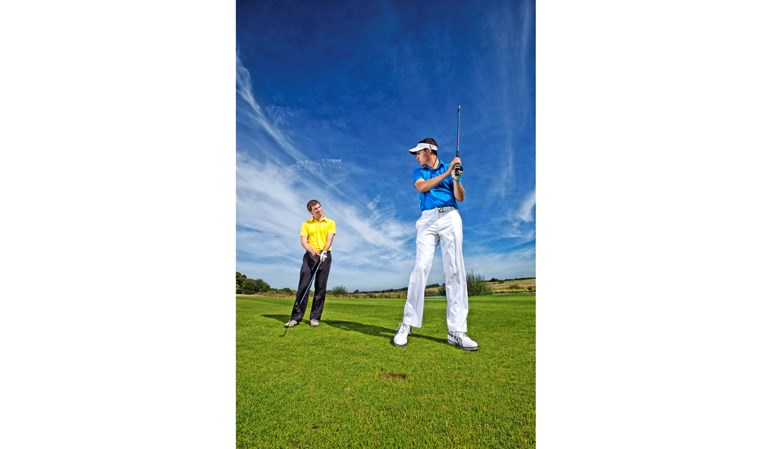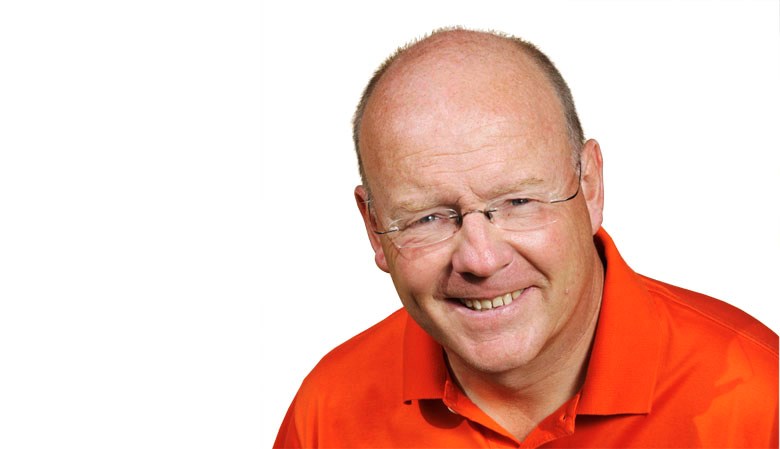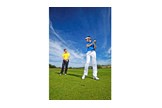How to swing
Last updated:
When amateurs go to golf lessons they often have a pre-determined idea of how they should be swinging the club. Unfortunately, they are usually wrong – and these golfing myths are actually harming their performance.
Myth 1: ‘Slow your swing down!’
I rarely tell a pupil directly to “slow down” their swing; in my experience, all that happens is they swing slow and poorly, rather than quick and poorly! The key is to engage a movement that is naturally a little calmer. Generally, club golfers take the club away with just their hands and arms. These lighter muscles are very good at moving too quickly in isolation.
Solution: Instigate a torso coil via the left shoulder – your core muscles tend to move much more deliberately. So, don’t say “slow” – try “load”, “coil” or “stretch”; vocabulary that suggests a calmer tempo. However, there is nothing wrong with a quick swing as long as it is a functional swing.
Myth 2: ‘Keep your head still!’
This disastrous advice is a swing killer; if you observe the best players on Tour in slow motion, you will soon realise that even the most precise swings have a couple of inches of head movement. The fact the shoulders twist as they coil means that a hint of lateral movement is unavoidable in the backswing. The difference with a Tour pro is that movement does not return laterally past the ball at impact; a “centred” head is the result of a good swing, not the cause of a good swing.
Solution: Simply adhering to advice from moving ball games is a good thing for the golfer. Keeping your eye on the ball is sufficient discipline to prevent ‘swaying’ and will not restrict the backswing coil. Six inches of sway is less damaging than two inches of tilt.
Myth 3: ‘Keep that left arm straight!’
Like a centred head, a straight left arm is the result of a correct swing, not the cause of one. The biggest killer of a senior golfer’s game is a reluctance to hinge or cock the wrists – the older we get, the stiffer our wrists become. The stiffer our forearms, the stiffer our wrist hinge/cock becomes; it’s counter intuitive, but “oily” wrists make you more accurate than rigid wrists.
Solution: Make sure your backswing is a blended movement of shoulder coil and wrist cock. Assuming your left arm is in line at address, if your shoulders coil and your wrists cock, there is no reason for the left arm to lose its form or line.
Myth 4: ‘Swing the same with every club!’
Really? If you are labouring under this ridiculous concept, you will see a great improvement if you stop and think for a minute. Answer this question; would you stand the same distance from a tree if you had a long-handled axe as opposed to a short-handled one? Of course you wouldn’t! A driver is 45 inches long, whereas a sand wedge is 35 inches, so you cannot swing both clubs the same.
Solution: Go to your PGA pro and ask him to show you how and why your swing plane changes with every club. He will teach you how to improve your posture according to the club in use. You will come to realise that the driver demands a long, flattish swing, while the wedge creates a shorter and much more upright swing.
Think positive
As a general principle, trying not to do something in your swing is like saying “don’t think of a pink elephant”. See! You end up doing the exact opposite of what you intended. Always look for a positive cure, rather than a negative fix – overcome faults by actively applying something to do, rather than something not to do. Above all else, endeavour to be a “shot maker” – not a “swing-maker” – by focusing on the task (the shot you’re trying to hit) and not the technique (how you’re trying to do it).



